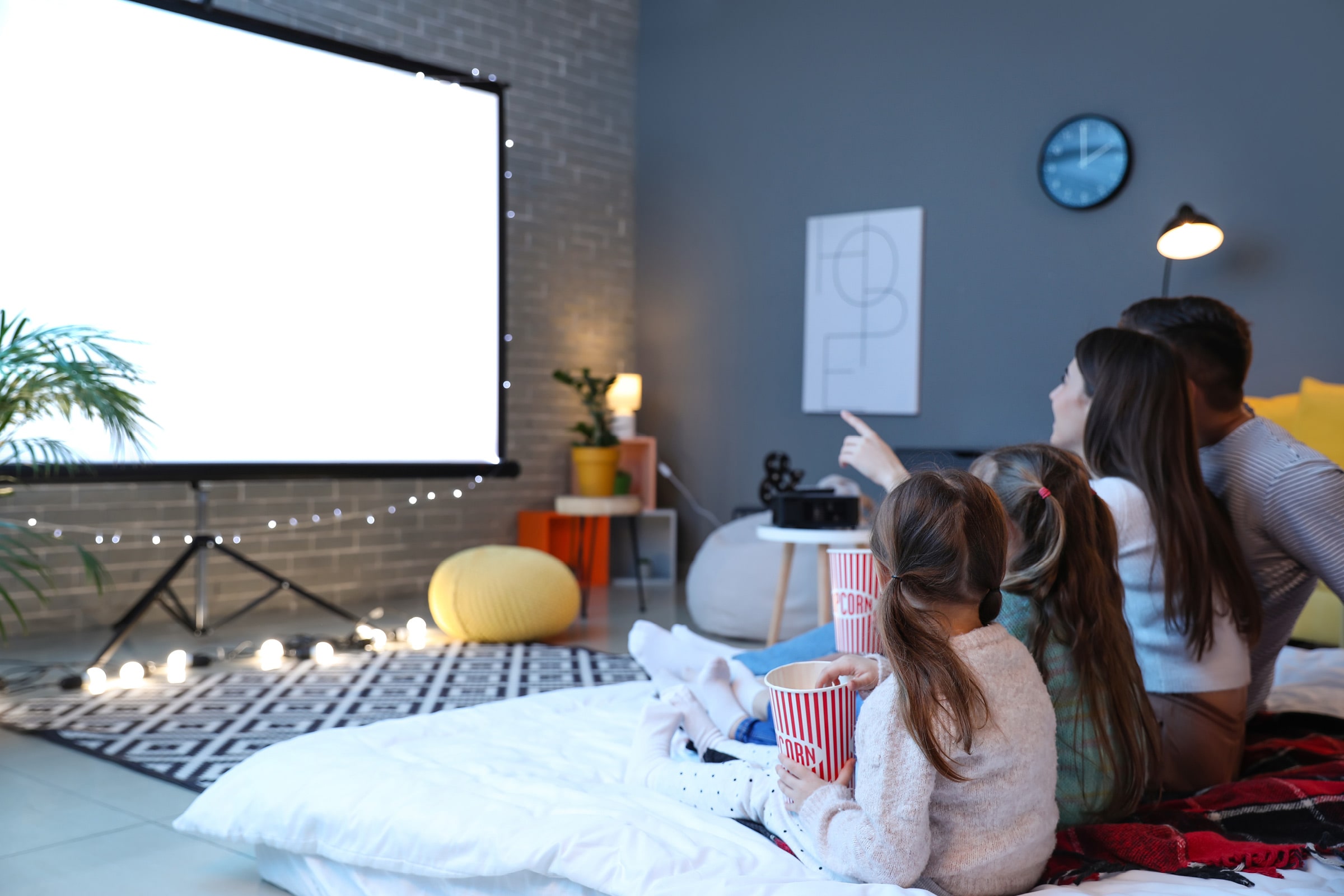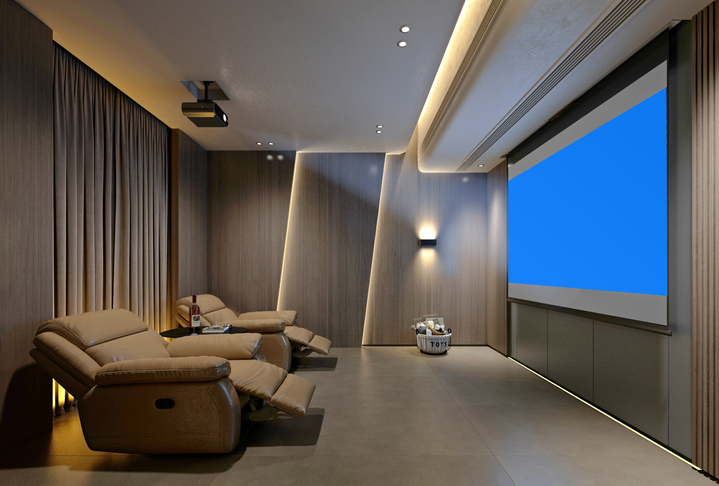Top Home Theater Tampa Installers Offering Personalized Services
Home Theater 101: Every Little Thing You Required to Know for a Cinematic Experience in your home
Developing a home cinema that matches the cinematic experience of an industrial theatre entails cautious consideration of multiple components, consisting of screen selection, sound systems, and room format. Each component plays a crucial function in accomplishing the preferred setting and functionality. Whether you are pondering the suitable screen size or the ins and outs of surround noise, recognizing these fundamentals is crucial. As we check out these critical elements, it comes to be evident that the selections made can considerably impact your total watching experience, leaving one to consider just how these choices will certainly shape your individual cinema.
Picking the Right Screen
When setting up a home cinema, picking the best screen can make or damage the seeing experience - home theater installation tampa. The screen offers as the centerpiece of your configuration, influencing photo high quality, viewing angles, and total aesthetic. Secret factors to think about include display type, size, and resolution
Initially, identify the ideal screen size based upon your space dimensions and seating range. A basic standard is to sit about 1.5 to 2.5 times the diagonal display dimension for ideal watching. Next, select in between various screen types, such as fixed-frame, mechanized, or retractable screens, each offering unique benefits. Fixed-frame screens generally give the finest photo quality, while mechanized options enable versatility in space usage.
Resolution is an additional crucial variable. For an absolutely immersive experience, consider a screen developed for 4K or perhaps 8K web content, guaranteeing intensity and quality. Additionally, think about the display's gain, which influences illumination and comparison; a higher gain can enhance brightness in well-lit rooms, while a lower gain might be extra suitable for darker atmospheres.
Picking Sound Equipment
Audio equipment is an important part of any kind of home cinema system, significantly enhancing the general watching experience. The choice of audio equipment can determine the deepness, quality, and immersion of audio, essential for producing a cinematic environment.
When choosing audio equipment, consider a border audio system, which commonly consists of a receiver, several speakers, and a subwoofer. A 5.1 or 7.1 network system is advised, where the very first number represents the audio speakers and the second the subwoofer, offering an immersive soundscape. The receiver is the heart of the system, managing sound and video clip signals, and ought to support modern-day layouts like Dolby Atmos for an improved spatial experience.
Quality speakers are important; search for versions that use a balanced sound account with great bass response. Floor-standing audio speakers can create richer audio, while shelf options conserve area. Additionally, take into consideration cordless options for ease of setup, although wired systems typically provide exceptional performance.

Optimal Seating Arrangements
Creating an optimal home cinema experience pivots significantly on ideal seating arrangements. The setup of seats plays a crucial duty in both convenience and viewing quality, directly influencing the general cinematic experience.
First, consider the display size and seeing distance. A typical standard is to position seats at a range about 1.5 to 2.5 times the diagonal size of the display. This guarantees an immersive experience without straining the eyes.
Following, elevation is critical. The back rows must be greater than the front to prevent obstructions if your seats is in a tiered format. For level seating, ensure that the front row is not as well close to the display, and that Check This Out everybody has a clear line of vision.
In addition, think about the setup in terms of social characteristics. Group seating can improve the communal experience, while private seats might be chosen for individual viewing.

Finally, focus on comfort with ergonomic seating that sustains extended viewing periods. Incorporating recliners or cushioned seats can significantly boost the experience, making the home cinema a recommended location for both enjoyment and leisure.
Lighting and Atmosphere
Reliable illumination and atmosphere are important parts of a well-designed home theater, as they substantially affect the viewing experience. The ideal lights can boost the cinematic feeling, while bad selections can detract from it. For ideal outcomes, take into consideration a split lighting method that includes ambient, task, and accent illumination.
Ambient illumination gives basic lighting, ensuring that the space is not completely dark, which can strain the eyes. Dimmer switches are highly recommended, enabling for modifications based on the material being checked out. Task illumination, such as wall surface sconces or floor lamps, provides practical illumination for activities like reading or navigating the space without disrupting the overall atmosphere.
Accent lighting can be made use of to highlight building functions or produce focal points, adding deepness and passion to the space. LED strip lights behind screens or along racks can give a refined glow that enhances the aesthetic experience without overwhelming the viewer.

Wiring and Installation Tips
A well-planned circuitry arrangement is critical for accomplishing ideal performance in your house movie theater system. Appropriate wiring not just makes certain top notch sound and video clip signals but also boosts the general aesthetic of your room. Begin by mapping out your layout, recognizing where each element will be put, including your screen, audio speakers, and receiver.
When choosing cable televisions, focus on top notch, properly determined electrical wiring to reduce signal loss. HDMI wires ought to be used for video clip connections, while audio speaker cable need to match the specs of your speakers and amplifier. Choose in-wall rated wires to follow safety requirements and maintain a clean appearance.

Final Thought
In recap, creating a remarkable home cinema experience requires careful factor to consider of numerous elements, consisting of display selection, audio equipment, seating plans, lighting, and wiring. Each element plays an important duty in achieving optimum performance and visit here setting, inevitably improving the satisfaction of additional resources home amusement. By focusing on these elements, a cinematic atmosphere can be efficiently reproduced, enabling for immersive seeing experiences that rival traditional cinema settings. Attention to information in each area is important for general fulfillment.
Developing a home cinema that equals the motion picture experience of a commercial theatre involves mindful factor to consider of numerous parts, consisting of screen choice, audio systems, and room format.When establishing up a home cinema, choosing the best screen can make or break the watching experience. Next off, select between various screen types, such as fixed-frame, motorized, or retracting screens, each offering unique advantages. For a really immersive experience, consider a screen developed for 4K or even 8K web content, making sure sharpness and clarity.In recap, producing a phenomenal home movie theater experience requires mindful factor to consider of different elements, consisting of screen option, audio devices, seating arrangements, lights, and electrical wiring.